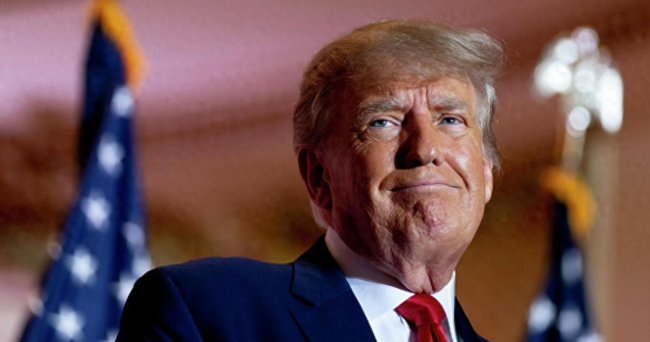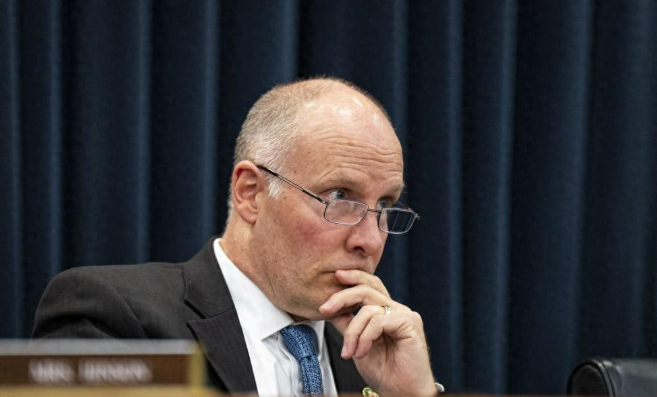The latest round of trade talks in Madrid ended without touching on the issue Washington cares about most: China’s rare earth supply. Some believed this meant the Trump administration had lost interest. In reality, it wasn’t unwilling—it was simply unable. Beijing’s stance has been firm, and Washington has no effective leverage.
As negotiations stalled, certain U.S. lawmakers floated extreme ideas. The most radical proposal threatened that “if China doesn’t supply rare earths, Chinese airlines will not be allowed to land in the U.S.” President Trump tried to maintain talks while using such small maneuvers to pressure Beijing, but China was already prepared.

U.S. Proposal to Block Chinese Airlines
Representative John Moolenaar introduced a proposal aiming to disrupt China’s aviation industry. Measures included banning Chinese carriers from landing in the U.S., restricting exports of aircraft and spare parts, and lobbying allies to block Chinese investments in aviation.
On paper, it looked like a “full package” strategy. In practice, it was more political theater than real leverage. Such measures would strike Boeing first. China is Boeing’s largest overseas customer, purchasing large numbers of jets annually. Cutting off cooperation would devastate Boeing’s finances, dragging down stock prices and erasing orders. Already plagued by safety and quality scandals, Boeing cannot afford another blow.
Moreover, expecting U.S. allies to comply is unrealistic. European Airbus, Germany’s Volkswagen, and other multinationals see China as their most critical growth market. For them, abandoning Chinese business for Washington’s political agenda means walking away from massive profits. Most allies may pay lip service but resist real implementation.

Worse for Washington, such a blockade would only accelerate China’s push for self-reliance. The domestically developed C919 passenger jet has already entered commercial service, and Beijing is intensifying efforts in engines and avionics. Cutting supply would not cripple China but instead shorten the timeline for independence, permanently depriving the U.S. of influence in China’s aviation market.
America’s Domestic Pressures
While U.S. lawmakers talk tough on China, the economic reality at home tells another story—particularly in rural America. Farmers, once the backbone of Trump’s voter base, are in crisis.
This year’s harvest season has brought more pain than joy. Grain prices remain low, while costs for fertilizer, fuel, and feed stay high. Many farmers found themselves operating at a loss. Bankruptcies are surging, with more farms going under in the first half of the year than in all of last year. Some are selling off land and equipment just to cover debt.

Republican lawmakers are warning of a looming rural financial crisis, largely fueled by the multi-year tariff war with China. Before the dispute, China absorbed about 41% of U.S. soybean exports—nearly a quarter of America’s total crop. Today, that figure has fallen to just 20%. In fact, China has placed almost no new soybean orders this year, forcing American farmers into deeper distress.
Trump has begun softening his rhetoric. Recently, he hinted at extending tariff truces and even called for China to quadruple its soybean imports from the U.S.—a plea reflecting both farm bankruptcies and looming election pressures. Without relief for rural voters, Trump risks losing critical Rust Belt support.
China Quietly Reduces U.S. Debt Holdings
While Washington shouts threats, Beijing acts silently on the financial battlefield. Latest data show China trimmed its U.S. Treasury holdings by $25.7 billion, reducing its total to $730.7 billion—the lowest since 2009.

This isn’t a sudden move. Since 2022, China has steadily sold over $280 billion worth of Treasuries. The motivation is clear: to reduce reliance on the dollar and create greater policy independence.
U.S. Treasuries are central to dollar hegemony. Washington sustains deficits and funds its economy through global purchases of its debt. But heavy Chinese holdings meant Beijing had to adjust passively to every Fed decision—from rate hikes to monetary expansion. By cutting exposure, China is removing this constraint, giving itself room to maneuver.
Trade data also confirm a broader shift. In August, China’s overall exports grew 4.4% year-on-year, showing strong fundamentals. Yet exports to the U.S. plunged 33.1% and have been falling for five consecutive months. This reflects a deliberate reduction in U.S. dependency, with Beijing pivoting toward ASEAN, Latin America, and the Middle East. For instance, soybean imports once dominated by U.S. suppliers have shifted to Brazil and Argentina.

These changes give China confidence at the negotiating table. Full decoupling may be unrealistic, but Beijing is diversifying risks, spreading trade across multiple partners, and strengthening economic resilience. Washington’s threats to cut supply chains no longer carry the weight they once did—and may even backfire, harming U.S. industries first.
References
- Reuters coverage of U.S. arms and trade disputes
- U.S. Department of Agriculture (USDA) export data
- China Customs Administration trade statistics
- U.S. Treasury International Capital (TIC) data



